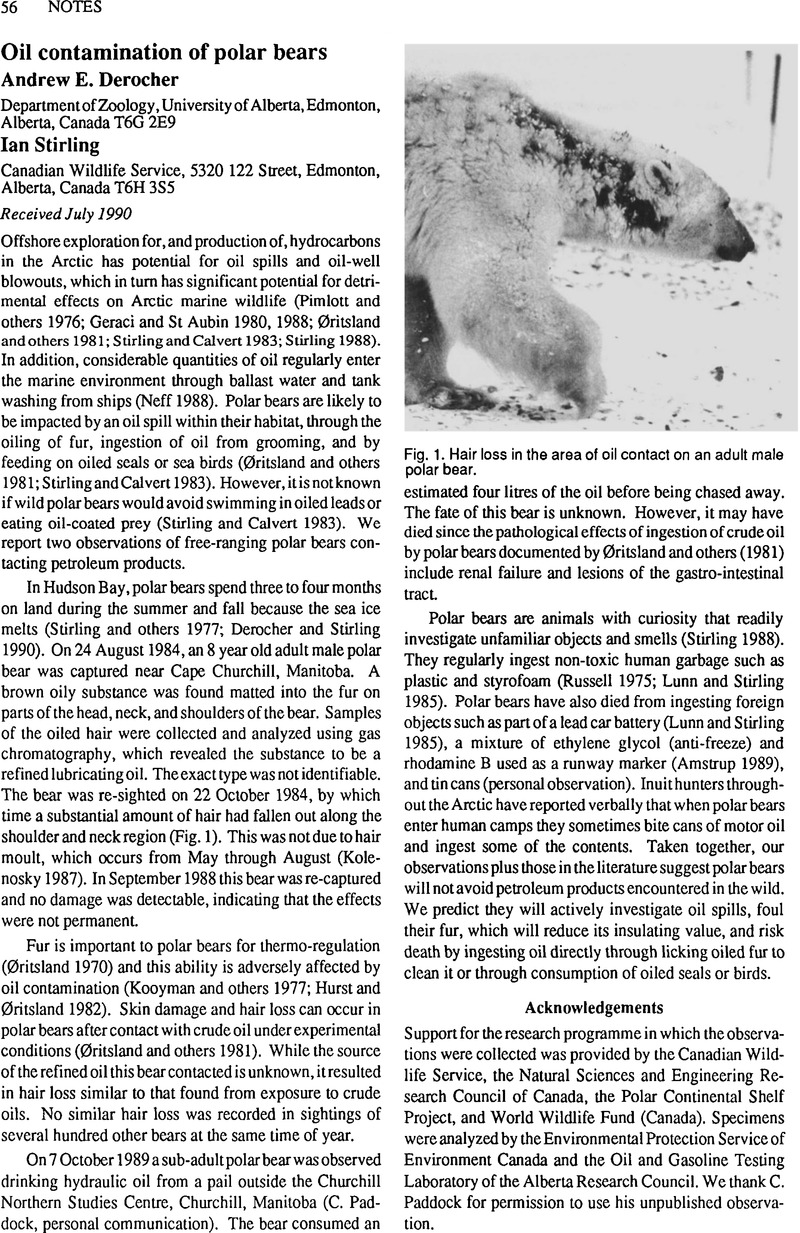Crossref Citations
This article has been cited by the following publications. This list is generated based on data provided by Crossref.
Vongraven, Dag
Aars, Jon
Amstrup, Steve
Atkinson, Stephen N.
Belikov, Stanislav
Born, Erik W.
DeBruyn, Terry D.
Derocher, Andrew E.
Durner, George
Gill, Mike
Lunn, Nick
Obbard, Martyn E.
Omelak, Jack
Ovsyanikov, Nikita
Peacock, Elizabeth
Richardson, Evan
Sahanatien, Vicki
Stirling, Ian
and
Wiig, Øystein
2012.
A circumpolar monitoring framework for polar bears.
Ursus,
Vol. 23,
Issue. sp2,
p.
1.
Wilson, Ryan R.
Horne, Jon S.
Rode, Karyn D.
Regehr, Eric V.
and
Durner, George M.
2014.
Identifying polar bear resource selection patterns to inform offshore development in a dynamic and changing Arctic.
Ecosphere,
Vol. 5,
Issue. 10,
p.
1.
Helm, Roger C.
Costa, Daniel P.
DeBruyn, Terry D.
O'Shea, Thomas J.
Wells, Randall S.
and
Williams, Terrie M.
2014.
Handbook of Oil Spill Science and Technology.
p.
455.
Elvin, Sandra S.
2014.
The large marine ecosystem approach to assessment and management of polar bears during climate change.
Environmental Development,
Vol. 11,
Issue. ,
p.
67.
Atwood, Todd C.
Marcot, Bruce G.
Douglas, David C.
Amstrup, Steven C.
Rode, Karyn D.
Durner, George M.
and
Bromaghin, Jeffrey F.
2016.
Forecasting the relative influence of environmental and anthropogenic stressors on polar bears.
Ecosphere,
Vol. 7,
Issue. 6,
Atwood, Todd C.
Simac, Kristin
Breck, Stewart W.
York, Geoff
and
Wilder, James
2017.
Marine Mammal Welfare.
Vol. 17,
Issue. ,
p.
397.
Wilson, Ryan R.
Perham, Craig
French-McCay, Deborah P.
and
Balouskus, Richard
2018.
Potential impacts of offshore oil spills on polar bears in the Chukchi Sea.
Environmental Pollution,
Vol. 235,
Issue. ,
p.
652.
Pollock, Sonya Z.
Whittington, Jesse
Nielsen, Scott E.
and
St. Clair, Colleen C.
2019.
Spatiotemporal railway use by grizzly bears in Canada's Rocky Mountains.
The Journal of Wildlife Management,
Vol. 83,
Issue. 8,
p.
1787.
Atwood, Todd C.
and
Wilder, James M.
2021.
Ethology and Behavioral Ecology of Sea Otters and Polar Bears.
p.
325.
Wilson, Ryan R.
French-McCay, Deborah P.
Perham, Craig
Woodruff, Susannah P.
Atwood, Todd C.
and
Durner, George M.
2024.
Potential impacts of an autumn oil spill on polar bears summering on land in northern Alaska.
Biological Conservation,
Vol. 292,
Issue. ,
p.
110558.



